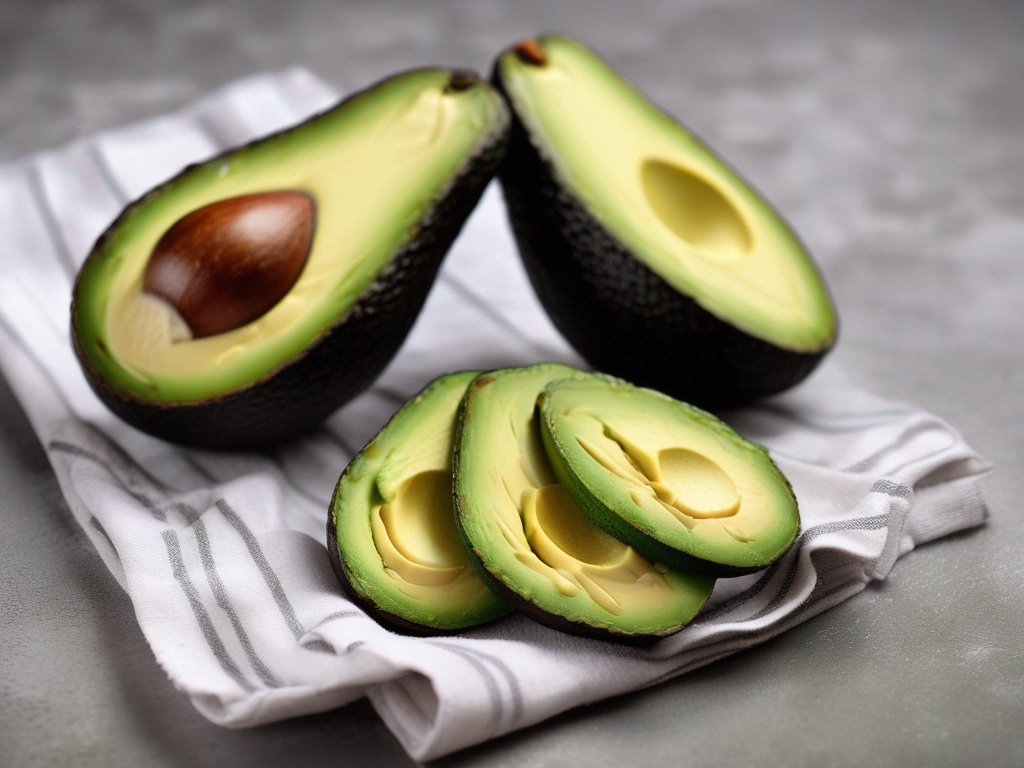
Top Tips for Preserving Fresh Avocados Cut for Longer Freshness
Get Your Free Food Safety Cheat Sheet
30 most common foods with instant answers. Print it and stick it on your fridge—completely free!
Top Tips for Preserving Fresh Avocados Cut for Longer Freshness
Fresh avocados are a versatile and nutritious fruit that can be enjoyed in various dishes. However, once cut, avocados tend to oxidize quickly, turning brown and losing their freshness. To prolong the shelf life of cut avocados and prevent them from spoiling, it's essential to store them properly. In this blog post, we will discuss some top tips for preserving fresh avocados cut for longer freshness. (Fresh avocados cut)
Why Preserving Fresh Avocados Cut is Important
Cut avocados are prone to oxidation, a natural process that causes them to turn brown due to exposure to air. This not only affects the appearance of the fruit but also alters its taste and texture. By following proper storage techniques, you can slow down the oxidation process and extend the shelf life of cut avocados.
Tip 1: Use Lemon Juice
- Lemon juice is a natural antioxidant that can help prevent cut avocados from browning.
- To use lemon juice, simply squeeze some fresh lemon juice over the exposed flesh of the avocado before storing it.
Tip 2: Store in an Airtight Container
- Storing cut avocados in an airtight container can help prevent air exposure, which slows down the oxidation process.
- Make sure the container is just the right size to minimize air contact with the surface of the avocado.
Tip 3: Keep the Pit Intact
- The avocado pit can help slow down the browning process by reducing the surface area exposed to air.
- When storing a half avocado, leave the pit intact and store it in an airtight container.
Tip 4: Use Plastic Wrap
- If you don’t have an airtight container, you can use plastic wrap to cover the exposed flesh of the avocado.
- Press the plastic wrap directly onto the surface of the avocado to minimize air contact.
Tip 5: Refrigerate Properly
- Cut avocados should be stored in the refrigerator to maintain freshness.
- Place the cut avocado in the coldest part of the fridge, usually the crisper drawer.
Safety Precautions
While preserving cut avocados, it's essential to follow proper food safety guidelines to prevent contamination and foodborne illnesses. Here are some safety precautions to keep in mind:
- Wash your hands before handling cut avocados to prevent the transfer of bacteria.
- Use clean utensils and cutting boards when preparing avocados to avoid cross-contamination.
- Store cut avocados away from raw meats and other potential sources of contamination in the refrigerator.
- Discard any cut avocado that shows signs of spoilage, such as a foul odor or mold growth.
By following these safety precautions, you can ensure that your cut avocados remain safe to eat and enjoy.
Conclusion
Preserving fresh avocados cut for longer freshness is easy with the right techniques and storage methods. By using lemon juice, airtight containers, and proper refrigeration, you can extend the shelf life of cut avocados and enjoy them in your favorite dishes without worrying about them turning brown. Remember to follow safety precautions to ensure the quality and safety of your stored avocados. With these top tips, you can savor the delicious flavor and creamy texture of avocados for longer periods. Enjoy your fresh avocados cut with confidence! (Fresh avocados cut)
Related Posts
Here are some other articles you might find helpful:
Authoritative Food Safety References
These agencies and university labs inform every tip and health precaution we publish.
USDA FoodKeeper – Cold Storage Guidelines
Official refrigerator, freezer, and pantry timelines maintained by the U.S. Department of Agriculture.
Visit USDA FoodKeeperFDA Produce Safety Rule & Grower Guidance
Field-to-fridge handling practices that prevent contamination of fruits, vegetables, and leafy greens.
Visit FDA Produce SafetyCDC Foodborne Illness Prevention Hub
Surveillance-backed guidance on pathogens, symptoms, and steps to reduce foodborne illness risk.
Visit CDC Food SafetyUC Davis Postharvest Technology Center
University research detailing optimal storage atmospheres for produce after harvest.
Visit UC Davis PostharvestPenn State Extension – Home Food Preservation & Safety
Peer-reviewed extension bulletins on safe canning, chilling, and reheating practices.
Visit Penn State ExtensionGet Your Free Food Safety Cheat Sheet
30 most common foods with instant answers. Print it and stick it on your fridge—completely free! Want more? Upgrade to the complete guide with 70+ foods.
Scan your food directly and get instant safety info using our AI-powered camera feature.